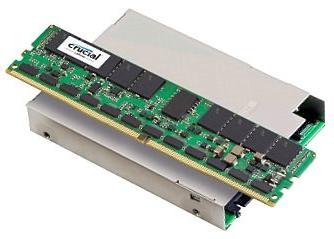Crucial (Micron) today launches nvdimm memory for server. It is quite interesting as this type of memory combines dram and nand on one single module. This way you will get the performance of dram but during a power outage, your data will remain intact.
Nvdimm is short for nonvolatile DIMM memory and takes a seat into DDR4 memory slots of servers. The 288pin DIMMs offer a speed of 2133MT/s and a bandwidth of 17 GB/s . The memory operates at the standard JEDEC voltage of 1.2V . When a power outage or other interruption system controller transmits the signal to the module so that the data of the dram to the non - volatile memory will be written.
Once power kicks back in allows the controller will write the data to dram again, at that point the system can continue as-is. Crucial sells nvdimm as a separate module and a 2.5 " -formfactor combined with a PowerGem capacitor from AgigA Tech, which temporarily keeps the DIMM powered during outages. Crucial only offers 8GB nvdimms. According to Micron 16GB versions are coming.





